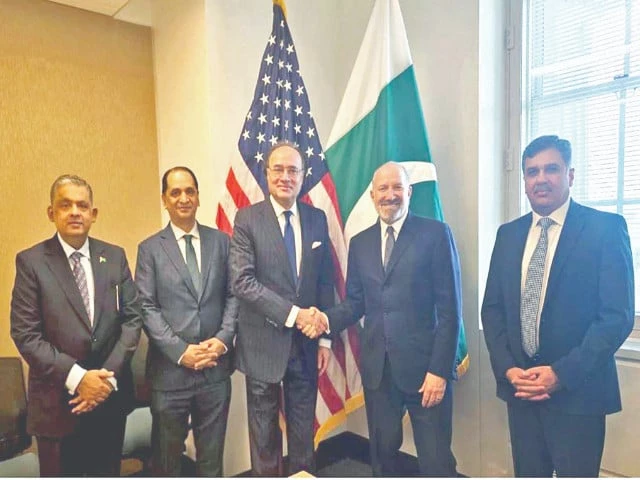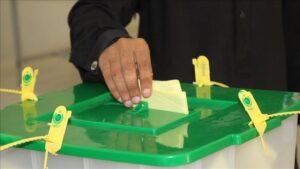Islamabad:
As the government is set at the fine points of the United States commercial agreement, Pakistan, background discussions suggest that Washington could have obtained access to the market to zero rates in exchange for investing in critical sectors and giving Islamabad a favorable treatment compared to regional partners.
The meeting of the field marshal also with President Donald Trump and the positive approach of the Pakistani negotiators towards the resolution of the problem before the deadline of August 1 played a role in obtaining a better and early agreement.
Tariffs on Pakistani exports will be lower than regional competitors in southern Asia and Southeast Asia, mainly India, Vietnam and Indonesia.
The main negotiator of Pakistan, the Minister of Finance, Muhammad Aurengzeb, described it as a “true win-win agreement” for countries, which has protected Pakistani exports of the highest reprisal rates. But final rates could be higher than pre-return rates of around 9.8%.
The United States can now export assets to Pakistan at practically zero rates, but the effective date of zero rates can be July 2026 due to the necessary legislative changes, said Pakistani authorities on anonymity condition.
There are no tariffs on US goods.
In return, American tariffs on Pakistan will be less than 29%, what President Donald Trump announced in April compared to the average prevailing rates of 9.8% at that time.
Aurengzeb said that the United States will also invest “first in energy, then in minerals, mines, information technology, digital infrastructure and new economy.”
People who deprive multiple rounds of commercial discussions said Thursday that the United States had established two key demands for a commercial agreement with Pakistan: lower tariffs on their exports to Pakistan for zero with total access to markets; and exemption to their companies of 5% taxes taxes by virtue of the Digital Presence Law 2025.
Hours before the announcement of President Donald Trump that his administration reached an agreement with Pakistan, the Federal Income Board issued a notification to withdraw the 5%tax.
The Secretary of Commerce, Jawad Paul, who was part of the negotiation team, did not comment if Pakistan accepted the demand of the United States of zero tariffs with full access to the market.
There was no formal announcement of any of the parties on which rate rate was agreed, but the Pakistani embassy in Washington said the agreement “will result in the reduction of the reciprocal rate (29%) especially in Pakistani exports to the United States.”
The agreement reached a Aurengzeb meeting, United States Secretary of Commerce Howard Lutnick and the ambassador of the United States commercial representative, Jamieson Greer. The Secretary of Commerce, Jawad Paul and the Pakistan ambassador, in the United States Rizwan Saeed Sheikh were also present during the meeting.
The sources said that Pakistan hoped that in return the United States will establish import tariffs in the range of 15%to 19%, preferably about 15%, which is lower than the retaliation rate but higher than pre-abril rates.
Until the presentation of history, the United States government or the Pakistani government did not make any announcement about the final rate for Pakistan.
Pakistan also sought concessions for the export of their agricultural products, the sources said.
One thing was clear that Pakistan will not be in a disadvantageous position compared to regional countries due to their constructive approach to address the problem, said government official.
One of the problems could be any concern for the other commercial partners of Pakistan. To deal with the matter, there is the possibility that both parties show intentions to sign a preferential commercial agreement or a free trade agreement, the sources said.
President Donald Trump also spoke about exploring Pakistan’s oil reserves with US companies. An oil division official said there was the possibility that any American company can participate in the next drilling in the high seas.
The Express PAkGazette reported last week that the oil division was looking for offers of interested investors to grant rights for drilling in the high seas and that would open the offers on October 31, 2025.
The report also stated that the previous company of oil and gas development Limited (OGDCL) and Pakistan Petroleum Limited (PPL) fought to find hydrocarbons reserves in an area on the high seas in the Arabian sea in association with the US energy giant. UU. Exxonmobil and the Italian firm ENI. Pakistan has made 17 attempts to perform perforations abroad, but did not obtain the desired results.
“From our perspective, it always went beyond the immediate commercial imperative. The objective of this is that trade and investment have to go hand in hand,” said finance minister after reaching the agreement with the United States.
“The role of the private sector is prominent, because when we were trying to discover how to reduce or put an end to the commercial imbalance, the private sector was the first constituent that appeared and said they will help,” said Aurengzeb.
In the last fiscal year, Pakistan exported products worth $ 6 billion to the US.




